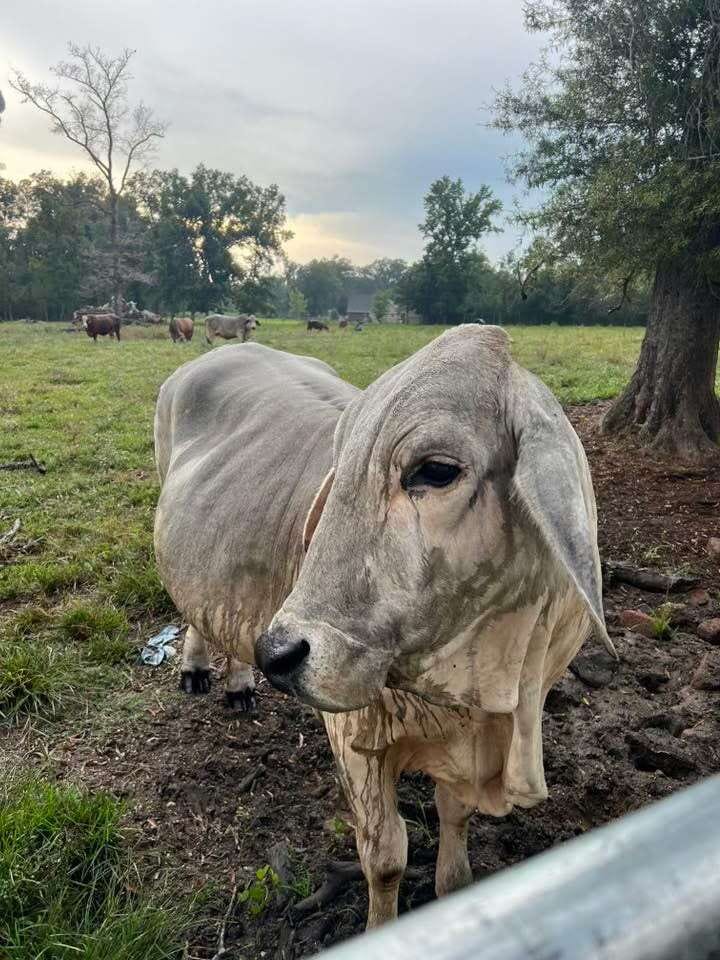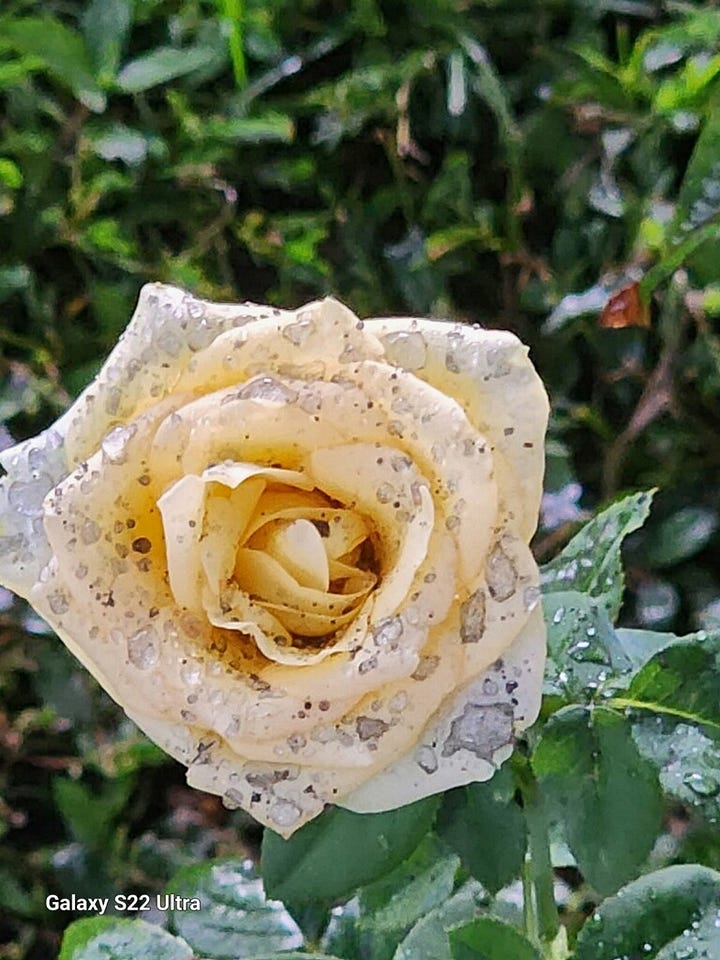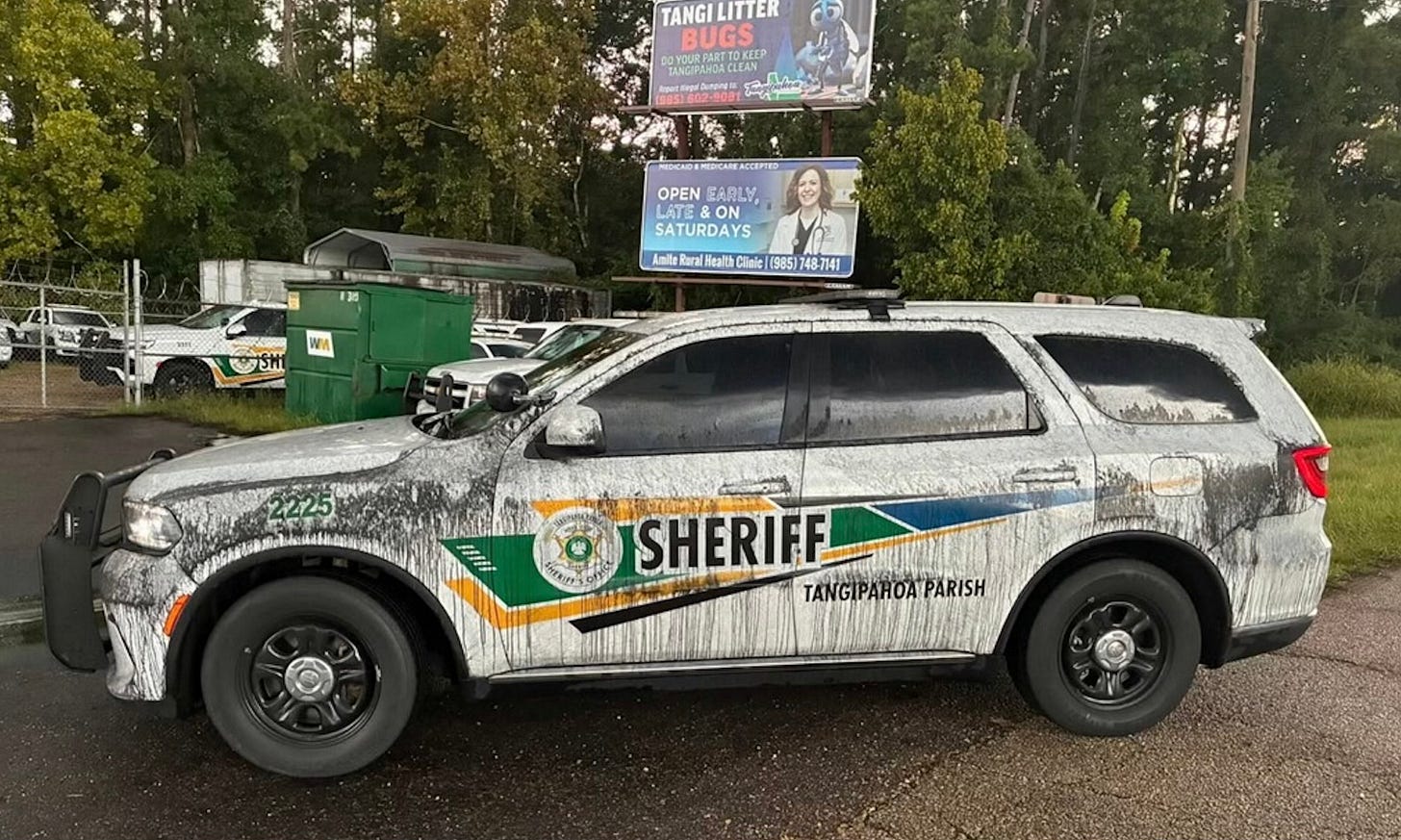Did EPA Tell Poisoned Americans You're On Your Own?
"Residents experiencing health problems should contact their personal physician or Louisiana Poison Center," EPA tells sick residents suffering nose bleeds and more after massive oil plant explosion
Two weeks after a massive oil plant explosion—and subsequent shower of oil residue and other toxic chemicals as far as 50+ miles away—the EPA’s response to Louisiana residents suffering from nose bleeds, breathing issues, headaches, nausea, and more is…
Call your doctor and good luck!
“Residents experiencing health problems should contact their personal physician or the Louisiana Poison Center at 800-222-1222,” the EPA told Status Coup in response to our question as to why the local Roseland Montessori school, which 1.3 miles from the Smitty’s Supply oil plant explosion, is still open despite photos we exclusively obtained showing the school is awash in oil residue and other potentially toxic chemicals (watch my report below).
In our question to the federal agency, we also noted that since the oil plant explosion two weeks ago, residents in Roseland and nearby communities have been complaining of nose bleeds, breathing issues, nausea, headaches, burning skin, and a horrible smell in their communities. Yet, the EPA basically answered us by telling folks to call the doctor.
“ABSOLUTELY NO,” Judith Zelikoff, a toxicologist and NYU professor, told Status Coup when asked if Roseland Montessori should still be open considering students are currently learning with oil residue on school windows, AC units, fences, street signs, the roof and parking lot, and other hot spots (and photos showed student with oil residue on their shoes—likely tracking potentially toxic chemicals back and forth inside and outside the school).
Zelikoff warned of potential short and long-term health risks posed to students, and residents, inhaling oil residue and potentially toxic soot and ash.
“Asthma, COPD, cancer, kidney disease, neurological problems, cardiovascular disease,” Zelikoff listed of the serious health issues school children currently in Roseland Montessori, and the wider community, are currently facing given that they are still learning, and living, in a community awash in oil.
As Status Coup reported, parents of Roseland Montessori students described a “horrible” smell at the school (one that resulted in school staff complaining of nausea). Others in Roseland and nearby communities have also complained of a horrible smell that persists over two weeks over the oil plant explosion.
It’s not just residents in Roseland and nearby communities being threatened by toxic chemicals—and what appears to be equally toxic federal and state government officials simply looking the other way and given a false “all clear” to residents trapped in a tsunami of oil.
In a video posted to Facebook on September 6, Captain Robert Lansden, a 30-year veteran of the U.S. Navy and current personal injury lawyer, showed a clear sheen of oil at Lees Landing, a part of the Tangipahoa River, more than 50 miles south of the Smitty’s Supply plant explosion (watch video below).
“September 6, 2025, Lees Landing, Tangipahoa River. The EPA has been in charge of the oil spill response since Monday August 25th. Lees landing in more than 50 miles of River from Roseland, Louisiana,” Captain Lansden wrote in a post with the video. “You can not neglect this river, that we love, the Tangipahoa River,” Landsmen said in the video as he showed the oil contamination in the river.
When Status Coup asked the EPA what chemicals and toxins the agency is specifically testing for in the area, EPA responded:
“EPA is conducting air monitoring for VOCs and benzene, and conducted air monitoring for PM2.5 until September 2. PM2.5 monitoring was set up to monitor particulates coming from the facility fire. Once the fire was contained, this monitoring was no longer needed. Incident-specific screening levels were set for each contaminant. Air monitors have not shown any detections above these screening levels. Air monitoring data is available on EPA’s website. EPA completed water sampling in the Tangipahoa River. The sampling is intended to characterize the presence or absence and magnitude of a broad suite of chemicals within the impacted area. Sampling was also conducted upstream of the impacted area to establish background conditions in the river. Water samples are being analyzed for PAHs, metals, and VOCs, as well as numerous other chemicals. Analytical results are pending and will be posted to EPA’s website when they are available.”


The EPA’s response is alarming—and not based on science—considering that the threat of air contamination is not erased when the fire is out. As occurred after the East Palestine train derailment and chemical detonation, and many other environmental disasters, once a chemical mushroom cloud forms over American communities, there is a risk of air and water contamination long after a fire has been put out.
For example, in East Palestine, soil contaminated with vinyl chloride, dioxins, and other toxic chemicals released those chemicals into the air upon changing weather patterns and cleanup crews digging. When vinyl chloride is released into the air, it turns into other harmful toxins including hydrochloric acid, formaldehyde, and carbon dioxide.
Like in East Palestine, which for over two years Status Coup has shown residents in EP and western Pennsylvania growing sicker despite the EPA’s “nothing to see here” narrative, the EPA’s answer in response to the Roseland, Louisa oil plant explosion indicates the agency is testing based on allowable regulatory levels of exposure for singular chemicals—rather than evaluating human exposure to multiple harmful chemicals at once (synergistic toxicity).
It should also be noted that Smitty’s Supply, the oil plant owner with a lengthy history of safety violations, is using “independent” testing contractor CTEH —the same CTEH whose been accused of essentially being corporate America’s go-to “nothing to see here” rubber stamp. More specifically, CTEH has previously been accused of manipulating and cherry-picking data in the aftermath of the BP oil spill and several other environmental disasters to provide the “all clear” its corporate clients desire.
On September 9th, independent chemical tester Scott Smith will hold a town hall in Roseland, Louisiana with affected residents. Status Coup will continue digging on this environmental disaster—and new corporate sacrifice zone—while the mainstream media continues to ignore the story.
Want more deep-dive reporting like this? SUPPORT Status Coup as a paying member for as low as 16 cents a day! BECOME A MEMBER today and get great perks like our monthly MEMBERS-ONLY call, behind-the-scenes videos from our ON-THE-GROUND reporting, and more!




Fantastic work exposing the greed, malfeasance and corruption that is ruling-class America now. We need to burn it down and rebuild.
All 50 states and scattered Wealth Management Portfolio holders of US are Louisiana residents now and we've got the government we paid & voted for! How does that feel dear banking sector off-shored funds adjusters? And Libertarians...
Tio Mitchito